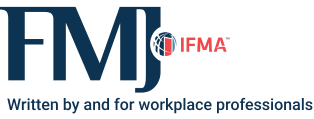Going Paperless
Upleveling collaboration through digitization

Digitization is revolutionizing all aspects of design, construction and building management — and it is changing the way organizations collaborate and unify these processes. The entire life cycle of a building, from the initial conceptualization until the time that building is demolished, incorporates a single yet multifaceted process to create and maintain a building that is safe.
With various stakeholders coming and going throughout that process, collaboration must expand beyond walking around the site together. Modern requirements call for the ability to access information and communicate anywhere, any time, on any device. This is especially relevant for facility managers who are around for the entire life cycle of a facility and need the right technology to stay in tune with it at every step. Visibility, accuracy and efficiency are key.
The digitization of codes & standards
Amid this technological wave, codes and standards have gone digital as well. The days of lugging around clunky code books are gone, as a new era in which FMs have all codes and standards at their fingertips provides a huge advantage compared to the shared office code book bursting with sticky notes.
Fire and life safety codes and standards permeate every aspect of the design, construction and maintenance of a facility, so it is critical that they are easily accessible, navigable and provide all stakeholders with the ability to easily collaborate. And while code books are written in black and white, anyone in the field knows that they are living documents, and the way requirements are applied in real scenarios is anything but cut-and-dried.
Digitization helps new information about codes and standards, such as tentative interim amendments (TIAs), errata and formal interpretations, get disseminated quickly and accurately to keep projects compliant. It also makes the codes and standards more interactive and can bring them to life with enhanced content, visual and audio aids, annotation features, sharing capabilities and more.
From an FM perspective, this digital application helps to encourage early FM involvement, improve collaboration, document project-specific details, share veteran knowledge and even upskill labor.
Enabling early FM involvement
All too often, FMs are brought into a project too late to capitalize on their value. This represents a massive loss in opportunity.
When involved early enough, FMs add significant value to their organizations and stakeholders by providing a keen perspective on long-term maintainability, safety and cost of operations. Whereas other players in the design and construction process are primarily focused on immediate cost-effectiveness, compliance and timeline, FMs seek to identify and better control underlying drivers that impact the building’s operations and quality of service delivery in the long run.
Take fire protection systems as one example. While it might be quicker and more cost effective to install a certain fire detector or sprinkler system within a building, an FM might determine that making a larger investment in a more advanced system from the outset will deliver cost savings in inspection, testing and maintenance after five years.
Digital collaboration on codes and standards makes it easier to bring FMs into the fold earlier. New technology can enable teams to collaborate on building plans and progress in one up-to-date, centralized location — whether they are on site or not. With increased visibility into the activities of designers, architects and engineers, FMs can provide strategic input on things like equipment selection and mechanical systems before it is too late.
Improving precision across teams
Digitizing codes and standards helps all teams involved in the design and construction process communicate efficiently and with greater accuracy. This can be especially helpful for the FM, who is expected to be the expert in all trades within a facility. While the FM may not be the resident expert on fire protection or other safety systems, they are expected to have knowledge on hand when needed.
Within a digital hub of codes and standards, FMs can document specific things going on in their facility as communicated to them by their contractors, noting details or variances alongside the relevant section of code for easy reference later. If an FM leaves or retires, this information can be easily handed down to their predecessor, and so on.
Another example: Often during inspections and final walk throughs, the authority having jurisdiction (AHJ), contractor, insurance representative or FM might observe that a specific aspect does not meet the code and standards requirement it needs to. In these moments, vague references to sections of code lead to workers poring through their code books trying to unearth the right requirements to rectify the situation. Often, they are working off a simple “This doesn’t meet code” or “Check NFPA 13.”
When these observances occur, the ability to quickly pull up all digital publications on any device, search by section or keyword across those publications, and find the relevant section of code to share with all parties for discussion is a major asset. Digitizing this process helps reduce miscommunication, resolve disputes faster and complete projects quicker while ensuring all building and life safety aspects are accurate and up to code.
Documenting project-specific variances
Digital trails provide many benefits over traditional paper trails. In the detail-oriented design and construction world, the lack of a centralized place for documentation is a critical vulnerability to FMs and their stakeholders in terms of safety and compliance.
Codes and standards requirements vary from project to project, jurisdiction to jurisdiction, etc. It is not uncommon for there to be variances and allowances by the AHJ to use alternative means to meet a specific code or standard requirement. Capturing these instances in an organized, well-documented manner, however, can be a challenge.
What happens when, 10 years after construction, a fire inspector notices something off and questions its compliance? Even if the FM was heavily involved in the design and construction process a decade ago, it is impossible for them to retain every small detail and variance. Sifting through hundreds of digital folders to find disparate PDFs citing AHJ approval can feel equally hopeless — and in today’s technological age, it is not necessary. Modern FMs need a platform where they can house every note taken across teams during the construction process and locate it quickly. When it comes time for inspections or renovations, FMs need to be able to pull up history that shows they were given AHJ approval in the design stage to avoid a larger problem.
Upskilling labor
The facility management profession is undergoing a transformation, and with it, a widening skills gap. To provide the most value to their organizations, today’s FMs need advanced business knowledge coupled with strong skills in strategic planning, emergency management, compliance and standards, leadership and communication. According to the 2021 FM Training Outlook Survey from the Professional Facility Management Institute, 91 percent of FMs recognize a gap between the knowledge their teams have and what they need to excel. The role of proper training can help bridge this gap; 79 percent of FM leaders believe training and credentials result in better job performance.
There is tremendous opportunity for digitized codes and standards to lend a hand in upskilling the next generation of qualified FMs. In the same way digitization can readily store and share past documentation on project specific-variances and AHJ permissions, it can also democratize veteran knowledge and disseminate it to new employees. Imagine if the 45-year veteran could easily create a knowledge base to bestow his industry expertise onto new employees instead of taking his note-filled book out the door with him on retirement day. Creating a digital history ensures that expertise does not disappear from the organization when its employees do.
In addition to promoting cross-generational collaboration, technology has also made great strides in offering interactive, accessible online training for employees seeking to advance their careers. When learning about codes and standards today, FMs can leverage videos, interactive modules, industry-specific content, situational content and more anywhere at any time. Plus, off-the-page learning is great for younger generations who have grown up getting their information online.
The bottom line
The importance of digital collaboration throughout the design, construction and maintenance of a building cannot be understated. With new technology, digital codes and standards are facilitating collaboration for all stakeholders and unifying these processes daily. By leaving physical code books in the past, FMs unlock a new standard of safety and efficiency.

Jon Hart is the technical lead for fire protection engineering and a principal engineer for the NFPA. In this role he is responsible for technical direction and content development for all NFPA product offerings involving fire protection engineering, including sprinklers, fire pumps and fire alarms. Previously, Hart served as principal engineer and dealt extensively with all issues involving fire and life safety of health care facilities as staff liaison for NFPA 99, Health Care Facilities Code. He has developed and delivered numerous training programs and has acted as technical editor for several NFPA Handbooks including the Health Care Facilities Code Handbook and the ITM of Water-Based Fire Protection Systems Handbook.
Read more on Leadership & Strategy and Technology or related topics Facility Technology , Data strategy and information management and Training
Explore All FMJ Topics









